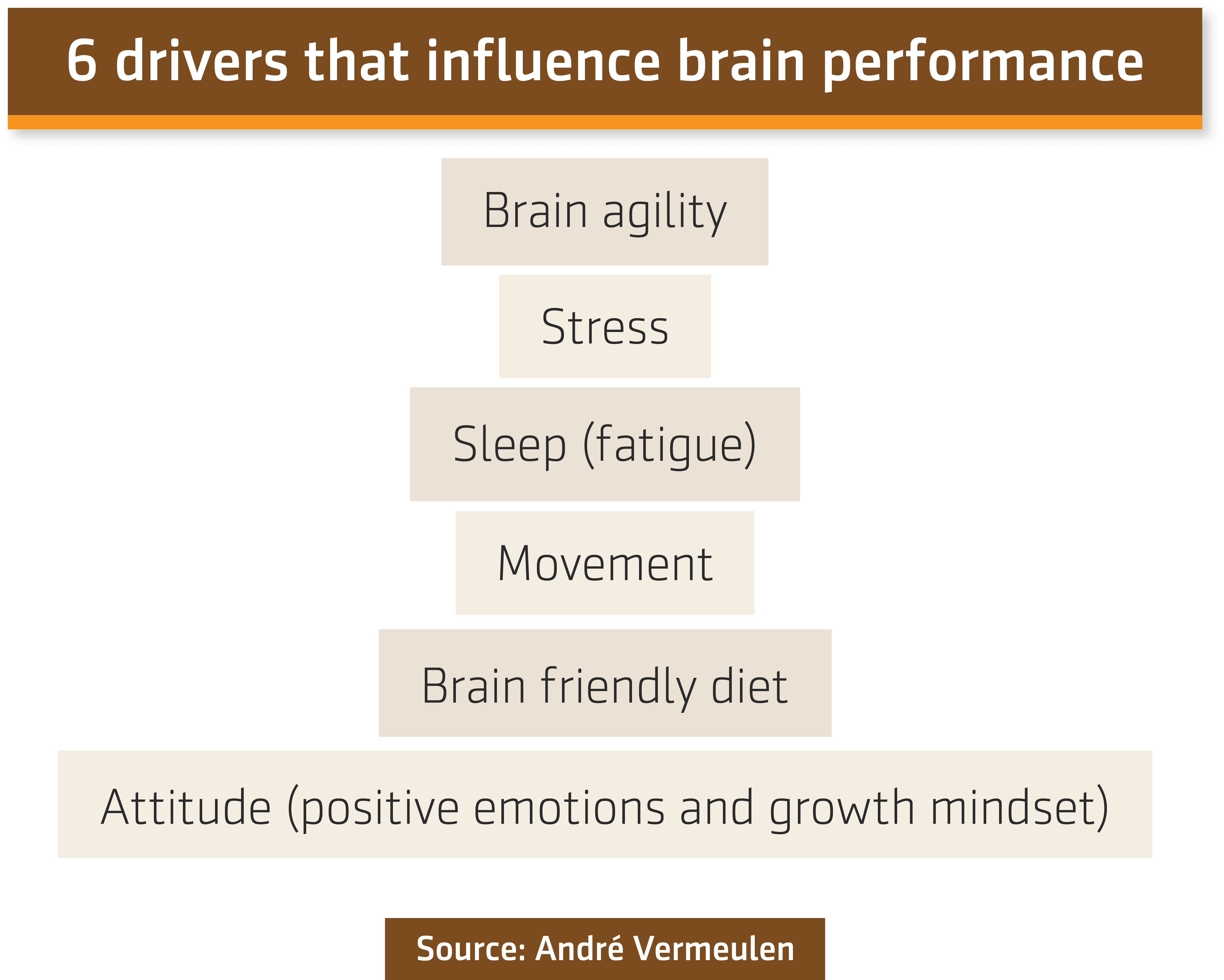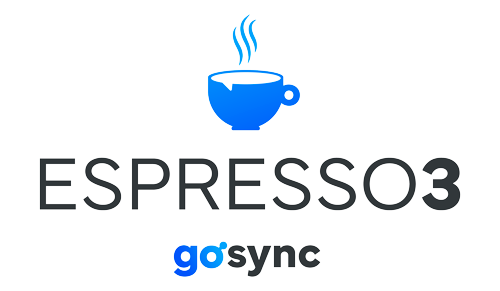Hi, I’m with André Vermeulen, researcher and consultant in neuroscience and we will talk about the Neuro-agility. I’m Wagner Cassimiro and this is the Espresso3.
First of all, what’s the concept of neuro-agility and why is it so important to design and develop a learning culture?
Neuro-agility is about the brain-based factors that influences the ease, the speed and the flexibility with which people learn, think and process information. As we are entering the fourth industrial revolution we are constantly facing disruptive change and the agility that people will need to very quickly adapt and adjust to new systems, new structures, new technology, create new spaces, learning spaces, job spaces and move into those spaces where it’s going to be unknown territory for people but they need to have that mental flexibility to be able to execute the learning and thinking functions needed in that moment to be able to do what they do. That’s what neuro-agility is all about.
If you look at a learning organization, it’s actually the sum total of the brain power of that organization. Obviously, when we want to create a learning culture in an organization, it has to start by optimizing people’s performance and empowering them with the agility to think, learn and create easy first and be flexible enough to do what is required of me in that moment to solve the problem, or to create new things or whatever the work, the job requires of me.
In your opinion, what are the main blockers of the brain activity?
There are many! I refer to them as drivers, so there are things that can either optimize your performance or lack of those skills will be a blocker to your performance.
The first one is brain agility. That is where we have the flexibility to utilize all different brain regions at one. But then things like stress causes us to lose control of certain brain regions, so we can never be at our best when we function under stress.
Another blocker is if we do not sleep well enough, because we need good sleep in order to be able to produce those chemicals vital for mental alertness, but also to heal and to re-energize. A long enough, but also good quality sleep has a very direct impact on your fatigue levels, so that’s why if you want to cope with stress and manage fatigue well, sleep is a very important part of it.
Then we have a saying that says movement is the door to learning, because if we move sufficiently, it switches on the brain. It helps us produce those vital neuro-transmitters that are important for processing information fast and easy, but also when we move, a cross lateral movement improves our brain agility but also energizes the brain as more oxygenated blood goes through the brain.
Then, obviously, the food we eat are the raw materials from which we produce those neuro-transmitters, so a brain friendly diet is essential. And then, how we think, our mindset or sometimes we refer to it as attitude, but it’s the way that we habitually think. If we think in a limited way, we think of ourselves and others and our world in a very limited way, we put ourselves in boxes and the alternative to that would be a growth mindset where we are open-minded, where we look at possibilities where we learn from challenges and negative experiences. They become our teachers, so we can progress and find solutions to those problems, open-mindedness, positive mindset, but the world now speaks about a growth mindset is a vital aspect of our optimizing brain performance or a limiting mindset that is a blocker to your brain performance.
Thank you!
In the next video, we will explore ways to implement this concept inside the companies.

TRADUÇÃO
Olá, estou com André Vermeulen, pesquisador e consultor em neurociência e falaremos sobre a neuroagilidade. Eu sou Wagner Cassimiro e este é o Espresso3.
Primeiro de tudo, qual é o conceito de neuroagilidade e por que é tão importante para projetar e desenvolver uma cultura de aprendizagem?
A neuroagilidade trata dos fatores cerebrais que influenciam a facilidade, a velocidade e a flexibilidade com que as pessoas aprendem, pensam e processam informações. Ao entrar na quarta revolução industrial, estamos constantemente enfrentando mudanças disruptivas e a agilidade que as pessoas precisam para rapidamente se adaptar e se ajustar a novos sistemas, novas estruturas, novas tecnologias, criar novos espaços, espaços de aprendizagem, espaços de trabalho e entrar nesses espaços onde será um território desconhecido para as pessoas, mas elas precisam ter essa flexibilidade mental para poder executar as funções de aprendizagem e pensamento necessárias naquele momento para poder fazer o que fazem. É disso que se trata a neuroagilidade.
Se você olhar para uma organização de aprendizagem, na verdade é a soma total do poder cerebral dessa organização. Obviamente, quando queremos criar uma cultura de aprendizagem em uma organização, deve-se começar otimizando o desempenho das pessoas e empoderando-as com a agilidade para pensar, aprender e criar facilmente primeiro e ser flexível o suficiente para fazer o que é necessário de mim, naquele momento, para resolver o problema ou criar coisas novas ou qualquer coisa que o trabalho exigir de mim.
Na sua opinião, quais são os principais bloqueadores da atividade cerebral?
Há muitos! Eu me refiro a eles como condutores, portanto, existem coisas que podem otimizar seu desempenho ou a falta dessas habilidades será um bloqueador para seu desempenho. O primeiro é a agilidade cerebral. É aí que temos a flexibilidade de utilizar todas as diferentes regiões do cérebro de uma só vez. Mas, então, coisas como ATD Brazil Summit nos fazem perder o controle de certas regiões do cérebro, então nunca desempenhamos nosso melhor quando estamos sob estresse.
Outro bloqueador é se não dormimos bem o suficiente, porque precisamos de um bom sono para poder produzir os químicos vitais para o estado de alerta mental e também para curar e reenergizar. Um sono longo o suficiente, mas também de boa qualidade, tem um impacto direto nos níveis de fadiga, por isso, se você deseja lidar com o estresse e gerenciar bem a fadiga, o sono é uma parte muito importante. Depois, temos um ditado que diz que o movimento é a porta para a aprendizagem, porque, se nos movermos o suficiente, ligamos o cérebro. Nos ajuda a produzir os neurotransmissores vitais que são importantes para processar rápido e facilmente informações, mas também quando nos movemos, um movimento transversal lateral melhora a agilidade do cérebro, mas também energiza o cérebro à medida que mais sangue oxigenado passa por ele.
Em seguida, obviamente, os alimentos que ingerimos são as matérias-primas a partir das quais produzimos esses neurotransmissores, portanto, uma dieta boa para cérebro é essencial. E então, como pensamos, nossa mentalidade ou às vezes nos referimos a ela como atitude, mas é a maneira como pensamos habitualmente. Se pensarmos de uma maneira limitada, pensarmos em nós mesmos, nos outros e em nosso mundo de uma maneira muito limitada, nos colocaremos em caixas e a alternativa a isso seria uma mentalidade de crescimento em que temos a mente aberta, onde analisamos as possibilidades, aprendemos com desafios e experiências negativas. Eles se tornam nossas professoras, para que possamos progredir e encontrar soluções para esses problemas. Mente aberta, pensamento positivo. Mas o mundo hoje fala sobre uma mentalidade de crescimento, sendo ela um aspecto vital do nosso desempenho cerebral otimizado e uma mentalidade limitadora sendo um bloqueador para seu desempenho cerebral.
Obrigado!
No próximo vídeo, exploraremos maneiras de implementar esse conceito nas empresas.

